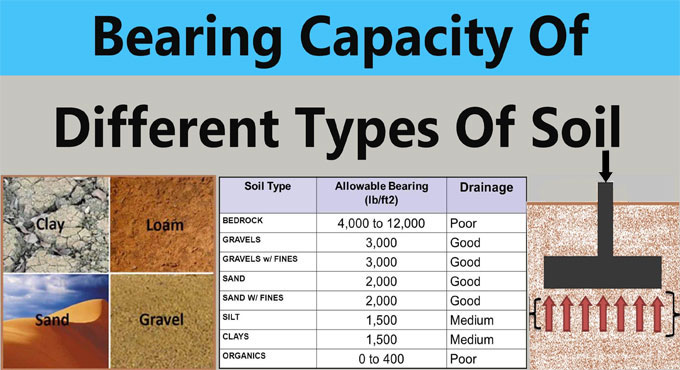NEWS | SOFTWARE | SHEET
How to Calculate the Safe Bearing Capacity of Soil
It is vital to find out the soil’s safe bearing capacity on the construction site. In case this isn’t conducted appropriately, the structure could deteriorate/settle, as well as the building could be undermined or might eventually fall down. Therefore, several assessments are carried out to determine the soil’s safe bearing capacity. At this point, in what way this can be done will be explained.
The soil’s safe bearing capacity is described like the highest load for each unit area that the soil could/can carry/endure/bear devoid of whatever/any settlement or displacement. That is calculated with regard to kilograms for every square centimetre.
In case the load goes beyond that point/mark, the soil is going to initiate to break or move. That is going to cause structure settlement which can finish up in critical outcomes.
Formula:
Soil’s Safe bearing capacity = [ultimate/definitive bearing capacity] / (Cross-section/cross section area x Safety’s Factor/ factor of safety)
Description: The soil’s ultimate bearing capacity is the mark whereat the soil initiates to dislocate under load. Furthermore, a soil can endure a set quantity of load simply, whereupon it initiates to dislocate or settle.
Furthermore, the cross section area/cross-section area is the soil’s area at site whereupon the assessments are being carried out. It could be a square meter in usual approach.
The safety’s factor/factor of safety designates in what way safe/good the soil capacity outcomes should be earlier than contemplating a set sort of construction. Generally, it relies on the sort of building being built. It’s set at two with regard to typical/customary civil constructions as well as three with regard to heavy or high rise/high-rise constructions.
Analysing/Testing methods with regard to soil bearing capacity – There’re certain techniques to find out the soil’s bearing capacity on the construction site. Amongst them, the Drop Weight Method is the simplest as well as it is a proven and accurate assessment.
In what way to carry out the Drop Weight Test:
- Excavate/Dig up a large hole/pit until/going to the foundation depth.
- Identify a weighty ideally cube-shaped/cube shaped object. Furthermore, stone blocks function more effectively. Calculate its exact weight.
- Elevate the cube till/up till a set elevation simply above the pit. That should be accurate too.
- Drop/leave the cube within/in the pit, as well as after that cautiously elevate it outside/out devoid of affecting the form/shape/impression created by/through the block.
- Calculate the impression’s depth created by/through the block.
- Replicate the earlier method many times as well as receive the average value.
Illustration:
Block’s weight – 1.2 kg
Drop’s Height – 120 cm
Impression’s Depth –1.6 cm
Cross section – 20 cm2
Factor of safety/safety factor – 2
As a result, ultimate bearing capacity is equal to (1.2 x 120)/1.6 is equal to 90
Furthermore, soil’s safe bearing capacity is equal to 90 / (20 x 2) is equal to 2.25 kg/cm2.
Safe Bearing Capacity [SBC] values with regard to various sorts of soils – Those values signify possibilities/probabilities simply.
One can utilize the details underneath with regard to make a basic design as well as approximation/estimation. On the other hand, one also has to perform the real assessments on site to identify the actual value as well as correct the design in view of that.
Black cotton soil – 1.5 kg/cm2
Wet, muddy or soft clay – 0.5 kg/cm2
Compacted clay – 4.5 kg/cm2
Loose gravel – 2.5 kg/cm2
Compacted gravel – 4.5 kg/cm2
Hard rocks – 33.0 kg/cm2
Soft rocks – 4.5 kg/cm2
Fine sand – 4.45 kg/cm2
Medium sand – 2.45 kg/cm2
Coarse sand – 4.4 kg/cm2
To get more detail, go through the following video tutorial.
Lecturer: Civil Engineers


